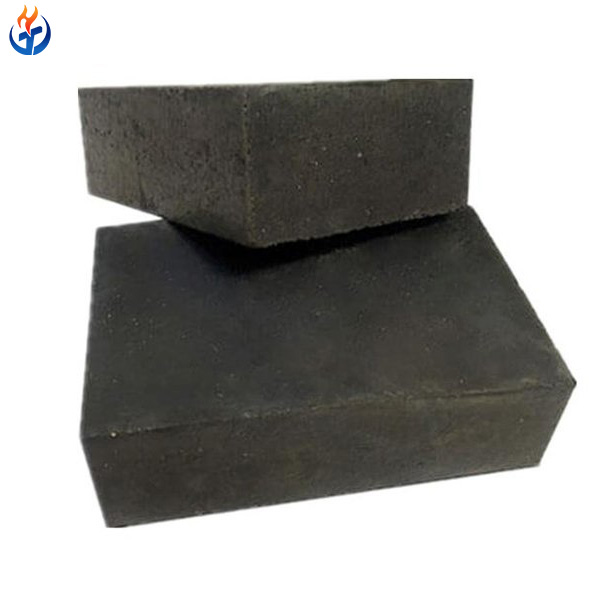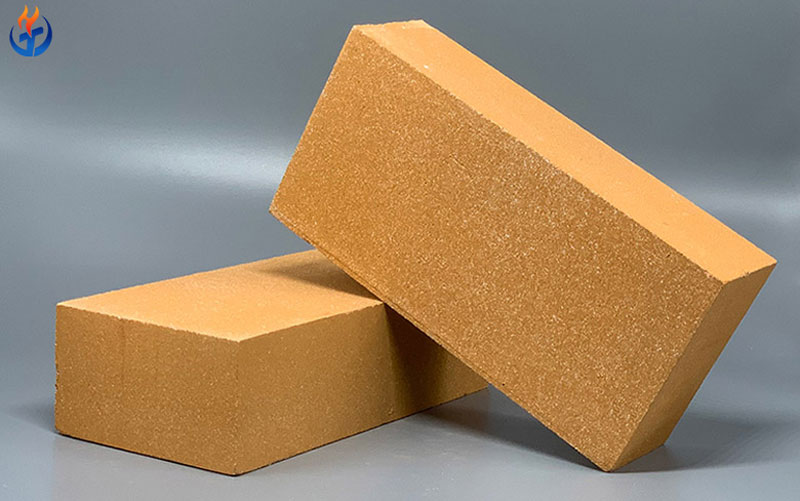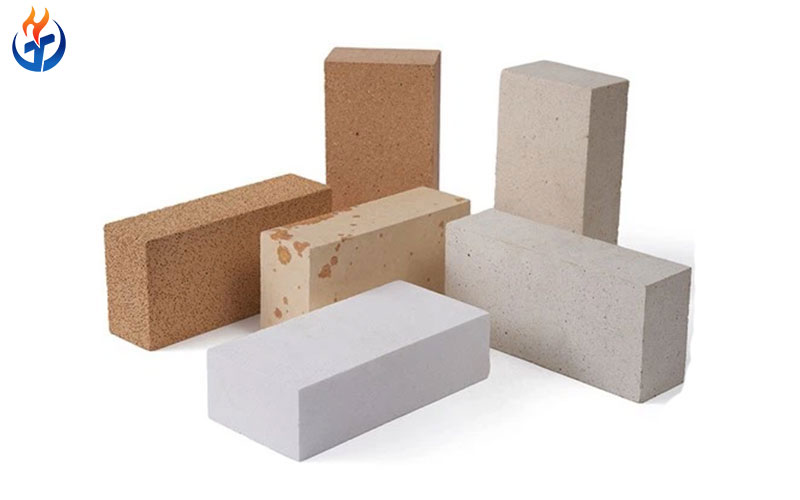In the world of refractory materials, magnesia carbon bricks (MgO-C bricks) have been a staple in high-temperature industrial applications due to their excellent thermal shock resistance, corrosion resistance, and mechanical strength. Over time, the aluminum magnesia carbon brick (Al-MgO-C brick) emerged as an improved version of traditional MgO-C bricks, offering enhanced performance in more demanding environments. Understanding the differences between these two types of refractory bricks is crucial for industries such as steelmaking, non-ferrous metallurgy, and cement production, where material performance directly affects operational efficiency, maintenance costs, and safety.
This article explores the differences between magnesia carbon bricks and aluminum magnesia carbon bricks in terms of composition, properties, applications, advantages, and price considerations. A comprehensive understanding of these differences can help engineers, procurement specialists, and plant managers make informed decisions when selecting the appropriate refractory material for their specific needs.
Composition
Magnesia Carbon Brick
Magnesia carbon bricks are primarily composed of high-purity magnesia (MgO) and carbon (graphite) as the main raw materials. Typically, the composition includes:
Fused magnesia: 75–90%
Flake graphite: 8–15%
Bonding agents and additives: 1–5%
The bonding agents can include pitch, resin, or other organic compounds that bind the MgO and graphite together. These bricks are usually fired at high temperatures to ensure proper bonding and durability. The carbon component provides excellent thermal shock resistance and corrosion resistance against basic slags, while magnesia ensures high melting point and structural stability.
Aluminum Magnesia Carbon Brick
Aluminum magnesia carbon bricks are an improved version of MgO-C bricks, with the main difference being the addition of aluminum (typically in the form of aluminum powder, alumina, or aluminum titanate). The typical composition includes:
Fused magnesia: 65–80%
Flake graphite: 8–15%
Aluminum additive (metallic aluminum, alumina, or spinel): 5–15%
Bonding agents and additives: 1–5%
The addition of aluminum reacts during the brick formation and firing process to create spinel (MgAl₂O₄) or other aluminum-containing compounds, which improves slag resistance, oxidation resistance, and mechanical strength under high temperatures.
Physical and Mechanical Properties
The composition differences lead to significant variations in the physical and mechanical properties of the two types of bricks. Below is a comparative overview:
| Property | Magnesia Carbon Brick (MgO-C) | Aluminum Magnesia Carbon Brick (Al-MgO-C) |
|---|---|---|
| Bulk Density | 3.1–3.3 g/cm³ | 3.2–3.4 g/cm³ |
| Cold Crushing Strength | 80–120 MPa | 100–150 MPa |
| Modulus of Rupture | 12–18 MPa | 15–22 MPa |
| Thermal Shock Resistance | High | Higher |
| Hot Strength | Moderate | High |
| Slag Resistance (especially for steelmaking slags) | Moderate | Excellent |
| Oxidation Resistance | Good (can be improved with coatings) | Superior (less carbon erosion) |
| Service Temperature | ≤ 1800°C | ≤ 1850°C |
As seen in the table, aluminum magnesia carbon bricks generally offer higher mechanical strength, improved oxidation resistance, and better thermal shock performance compared to traditional MgO-C bricks. This makes them more suitable for high-demand applications such as converter linings, electric arc furnace hearths, and ladle walls.
Slag and Corrosion Resistance
One of the key differentiating factors between MgO-C and Al-MgO-C bricks is their resistance to chemical attack.
Magnesia Carbon Bricks: These bricks perform well against basic slags, which are common in steelmaking. The carbon content helps resist penetration by molten slag and minimizes erosion. However, when exposed to oxidizing environments or acidic slags, the carbon can gradually oxidize, leading to reduced brick life.
Aluminum Magnesia Carbon Bricks: The aluminum component reacts with MgO to form spinel (MgAl₂O₄) during firing. This spinel layer acts as a protective barrier against chemical attack and improves slag resistance, particularly in environments with aggressive slags, such as high-alumina steelmaking slags or certain non-ferrous metallurgy processes. The oxidation of carbon is also mitigated, extending the service life of the brick.

Applications
Magnesia Carbon Brick
Magnesia carbon bricks are widely used in basic refractory applications due to their high basicity, thermal shock resistance, and slag resistance. Common applications include:
Steelmaking electric arc furnace (EAF) and converter linings
Ladle linings for basic steel production
Tundish linings for continuous casting
Non-ferrous metallurgy furnaces, such as copper and nickel smelting
Kiln linings in cement or lime production
These applications typically involve contact with basic slags and moderate temperatures.
Aluminum Magnesia Carbon Brick
Al-MgO-C bricks are selected for more demanding conditions, especially where oxidation resistance, slag resistance, and mechanical performance are critical. Typical applications include:
EAF hearth, tap hole, and back-up lining in steelmaking
Ladle linings in high-alloy steel or stainless steel production
Converter bottoms and sidewalls
Non-ferrous metallurgy furnaces exposed to aggressive slags
High-performance cement kilns and rotary kilns
Due to their superior properties, Al-MgO-C bricks generally have a longer service life and lower maintenance frequency in these high-stress environments.
Price Comparison
Price is always a key consideration when selecting refractory materials. While exact prices vary depending on suppliers, production methods, and specifications, a general comparison is:
| Brick Type | Price Range (USD/ton) |
|---|---|
| MgO-C Brick | $700–$1,000 |
| Al-MgO-C Brick | $1,200–$1,800 |
Though aluminum magnesia carbon bricks are more expensive, their longer service life and reduced maintenance costs often make them a more cost-effective choice in the long run, especially in high-temperature and high-stress environments.
Conclusion
Magnesia carbon bricks and aluminum magnesia carbon bricks both play critical roles in the refractory industry. While MgO-C bricks are reliable, cost-effective, and suitable for many standard applications, Al-MgO-C bricks offer enhanced performance in terms of mechanical strength, oxidation resistance, and slag resistance. The addition of aluminum, which promotes spinel formation, allows these bricks to endure harsher environments and longer service cycles, making them ideal for advanced steelmaking, non-ferrous metallurgy, and high-performance kiln linings.
When choosing between MgO-C and Al-MgO-C bricks, factors such as operating temperature, slag aggressiveness, oxidation potential, maintenance cycles, and budget should all be considered. While MgO-C bricks meet standard operational requirements effectively, aluminum magnesia carbon bricks provide superior protection and longevity in high-demand scenarios, justifying their higher cost and positioning them as a premium refractory solution.
Selecting the right refractory material is not just a matter of cost but also of optimizing plant efficiency, reducing downtime, and ensuring safety. By understanding the differences between magnesia carbon bricks and aluminum magnesia carbon bricks, industries can make informed decisions that enhance operational performance and provide long-term value.



